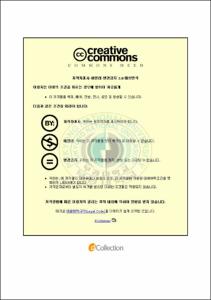제약산업의 부실예측에 관한 연구
- Alternative Title
- A Study on the Corporate Distress Prediction in the Pharmaceutical Industry
- Abstract
- 본 논문의 목적은 제약 산업의 특성을 고려한 부실예측모형을 개발하기 위해 재무제표정보를 이용하여 그 정보의 유용성과 함께 제약기업의 부실예측에 영향을 미치는 요인을 규명하고, 제약 산업의 특성을 반영한 부실예측모형을 개발하기 위한 것이다. 이를 위해, 1991년에서 2003년 사이에 은행연합회 신용불량정보를 통해 부실사유를 파악할 수 있는 기업을 부실기업으로 정의하였고 해당 기간 중 부실사유가 발생하지 않은 기업을 정상기업으로 정의하였다. 그래서 본 연구에서 총 24개 부실기업과 1,051개 정상기업을 연구표본으로 설정하였다.
본 연구의 변수는 기존 선행연구들과 신용평가사에서 제시하는 주요 재무비율을 종합하여 구성하였으며 이러한 재무비율은 성장성, 수익성, 안정성, 활동성으로 분류하였다. 그리고 본 연구의 모형의 추정은 부실기업에 비례하여 정상기업을 일정비율로 추출하지 않고 전체를 대상으로 분석하였으며 모형의 안정성 검증을 위해서는 규모와 시기에 따라 2개 표본으로 각각 구성하여 예측력을 검토하였다. 그리고 모형구성은 2단계를 통해 진행하였다. 1단계는 개별 재무지표의 부실예측력을 분석하였다. 이때 부실기업과 정상기업간 평균차이를 분석하기 위하여 t-test를 사용하였다. 2단계는 1단계 분석에서 유의한 것으로 선정된 재무지표를 바탕으로 로지스틱 회귀모형으로 부실예측모형을 구성하였다.
그 결과 부실 1년전 자료에서는 매출액 순이익율, 금융비용/매출액, 부채비율이 부실예측에 의미 있는 변수이며 금융비용/매출액이 매출액 순이익율과 부채비율보다 회귀계수의 값이 높게 나타나 차입구조와 질이 제약 산업의 부실을 예측하는데 중요하다는 것을 파악할 수 있었다. 그리고 본 연구에서는 제약 산업에서 가장 중요한 부분인 기술개발에 관한 변수들로 연구개발비집중도, 특허 수를 채택하였으나 부실예측에는 유의하지 않은 변수로 나타났다. 또한 부실 2년전 자료에서는 총자산 증가율, 금융비용/매출액, 매출채권회전율이 부실예측에 의미 있는 변수로 나타났으며, 매출채권회전율이 부실을 예측하는데 중요하다는 것을 파악할 수 있었다. 마지막으로 부실 3년전 자료에서는 매출채권회전율만이 유의하게 나타났다.
결국, 제약산업에서 매출액 순이익율, 금융비용/매출액, 부채비율이 유의한 예측지표이며, 한 가지 아쉬운 것은 연구개발 집중도와 특허출원 수가 유의하지 않았다는 점이다.
The objectives of this paper are to identify the causes of affecting on the distress prediction of pharmaceutical corporate using the information of financial statements and to develop a distress prediction model reflected the characteristics of the pharmaceutical industry. For them, through the credit delinquency information of the federation of banks from 1991 to 2003, the corporate confirmed the cause of distress was defined as an insolvent enterprise and the corporate, not happened the cause of distress during that period, was defined as a normal enterprise. So this study set up a total of 24 insolvent enterprises and 1,051 normal enterprises as a sample of study.
The variables of this study were composed by the consolidation of the major financial ratios suggested by the previous studies and Credit Bureau. And such financial ratios were sorted by the growth, profitability, stability and activity. The prediction of this study model was analyzed with a total of normal enterprises without considering one-to-one matching. For the stability verification of the model, this study divided the normal enterprises into two sub-samples according to size and time and went through the each predictability.
The analysis was carried out as two steps. The first step was the univariate analysis, which was used for checking the prediction power of individual financial variables. The t-test is used to identify the differences in financial variables between the distressed group and the non-distressed group. The second step was to develop distress prediction model with logistic regression. The variables showed the significant difference in univariate analysis were selected as the prediction variables.
The results of the logistic analysis were as follows. The return on sales, financial expenses/sales ratio and debt-equity ratio showed the significant effect on the distress. The financial expenses/sales ratio was especially important in distress prediction showing higher value in the regression factor than the others. Though the concentration rate of R&D expense and the number of patent drugs are usually regarded as essential factors in pharmaceutical industry, they had little relation with the distress prediction in this study. And according to the two year previous data to distress, total asset growth rate, financial expenses/sales ratio and accounts receivables turnover were meaningful variables in the prediction. Particularly accounts receivables turnover was discovered as a very important parameter in the prediction. Moreover three year previous data to distress showed that accounts receivables turnover was only meaningful factor.
In consequence, return on sales, financial expenses/sales ratio and debt-equity ratio were significant variables to predict the distress. The significance of concentration rate of R&D expense and the number of patent drugs were little than I had expected.
- Issued Date
- 2008
- Awarded Date
- 2008. 2
- Type
- Dissertation
- Publisher
- 부경대학교 경영대학원
- Alternative Author(s)
- Pyun, Do-Woo
- Affiliation
- 부경대학교 경영대학원
- Department
- 경영대학원 경영학과경영학전공
- Advisor
- 김태용
- Table Of Contents
- 제1장 서론 = 1
제1절 연구의 배경 및 목적 = 1
제2절 연구의 방법과 범위 = 3
제3절 연구의 체계 = 5
제2장 제약 산업의 현황 = 6
제1절 제약 산업의 실태 = 6
제2절 제약 산업의 과제 = 14
제3장 부실예측모형에 대한 연구 = 15
제1절 판별분석 = 16
제2절 로지스틱 회귀분석 = 19
제3절 최적화 기법 = 24
제4장 연구모형 = 26
제1절 연구표본의 선정 = 26
제2절 변수의 측정 = 28
제3절 분석방법 = 32
제5장 연구결과 = 36
제1절 단변량 분석 = 36
제2절 다변량 분석 = 40
제6장 결론 = 55
참고문헌 = 58
- Degree
- Master
- Appears in Collections:
- 경영대학원 > 경영학과-경영학전공
- Files in This Item:
-
-
Download
 제약산업의 부실예측에 관한 연구.pdf
기타 데이터 / 654.71 kB / Adobe PDF
제약산업의 부실예측에 관한 연구.pdf
기타 데이터 / 654.71 kB / Adobe PDF
-
Items in Repository are protected by copyright, with all rights reserved, unless otherwise indicated.